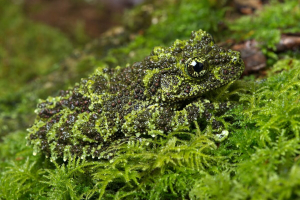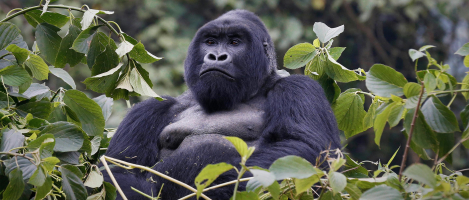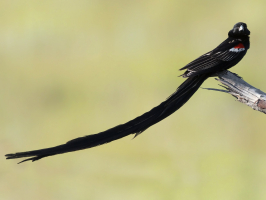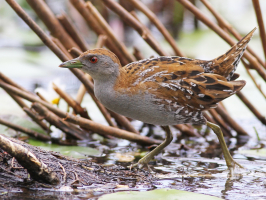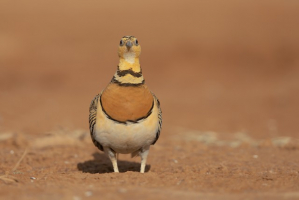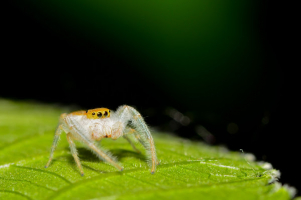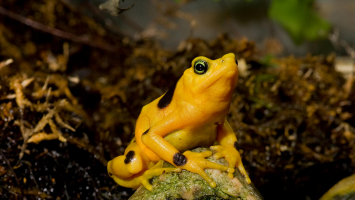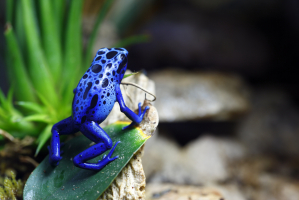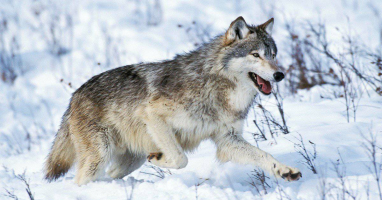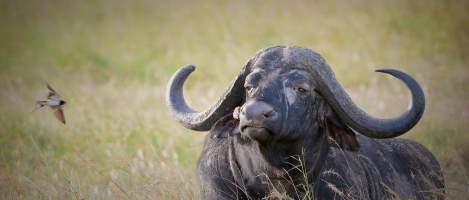Top 10 Most Amazing Mountain Animals
Animals living in the mountains must have special adaptations to survive. They often must be able to walk well in snow and on ice. Especially at the highest ... read more...elevations, the air is thinner, making it harder to breathe. They also have to have a diet and habitat that they can find at the highest elevations on earth. Here is a list of the most amazing mountain animals, let's find out!
-
The Alpine Chough can survive at elevations of up to 21,300 feet. More nests have been built by this bird than any other species in the world. They can resist heavy gusts thanks to their large, robust wings and tails. They can maneuver more easily thanks to their deeply notched wing tips. These flock-flying birds frequently make use of air currents to reduce the amount of energy they expend while flying. Because they are nestled among rocks, these birds are more protected from harsh gusts.
Compared to normal eggs, these eggs contain fewer pores. These eggs consequently lose less water. The eggs' hemoglobin is also altered, requiring less oxygen. The body of the hatchlings is covered in a substantial layer of down when they are born. These ubiquitous and plentiful species are not globally threatened, despite being vulnerable to parasitism and predation, as well as local population decreases brought on by changes in agricultural methods. Because the necessary Alpine habitat is moving to higher elevations because of climate change, this could pose a long-term threat.
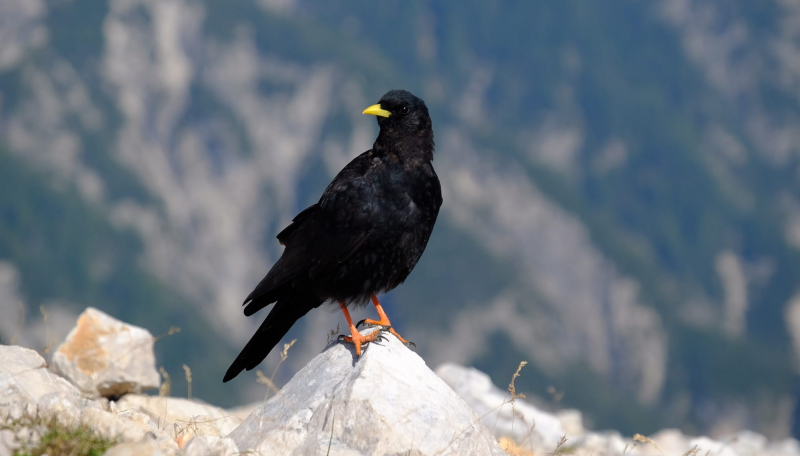
Kidadl 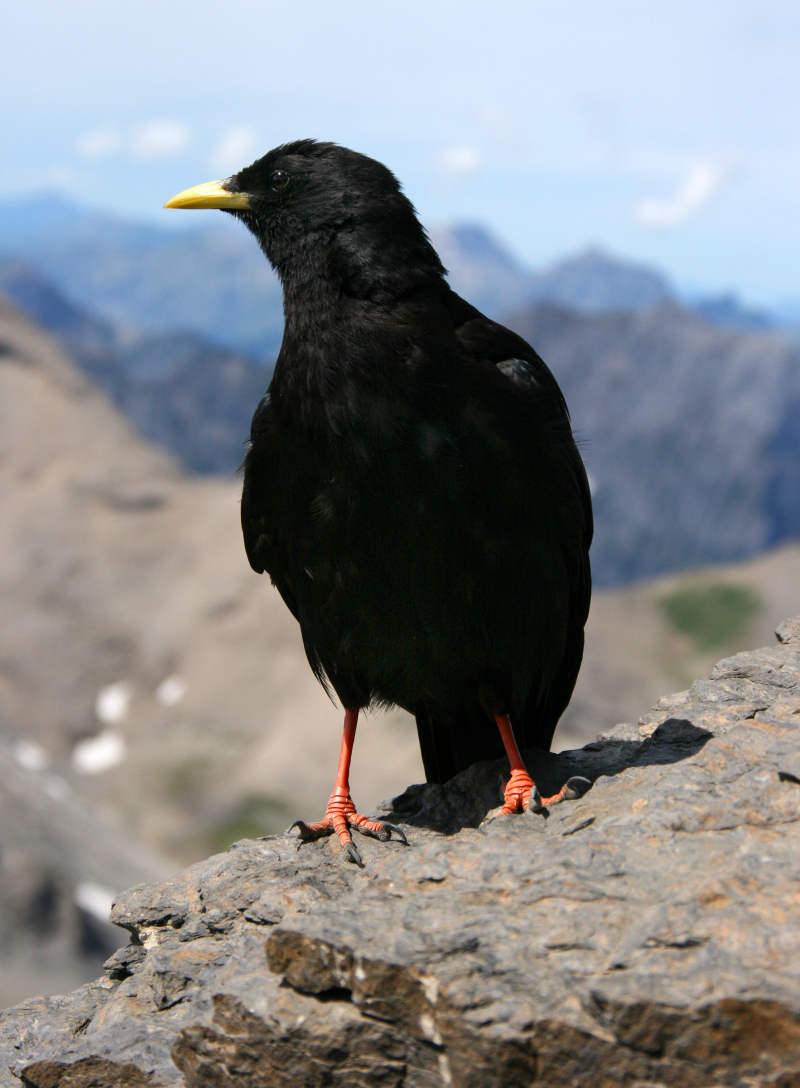
Wikipedia -
Yaks can survive at altitudes of up to 20,000 feet. The yak's large tongue aids in the removal of moss and lichen from uneven surfaces. While there are not many nutrients in the diet that the yak consumes, they have a rumen. Chewing their cud, like a cow, helps them get more nutrients out of the available food. The yak has a very sizable rumen. Because of this, they are able to consume more food at once and wait to eat it. Yaks have considerably lengthy intestines than most animals do. As a result, their food stays in their body longer, allowing them to absorb more nutrients from it.
The hearts and lungs of yaks are also larger than those of other cattle. Additionally, their blood cell count is higher. All of these cool adaptations let the animal maintain blood flow even in subfreezing conditions, allowing its body to utilize oxygen more effectively. Yaks have extremely dense coats, just like many other highland animals. Since its coat is water-resistant, the animal can stay warmer. It also has large hooves that are made for walking in slippery and snowy conditions. As a result, the yak migrates to lower elevations with ease throughout the winter.
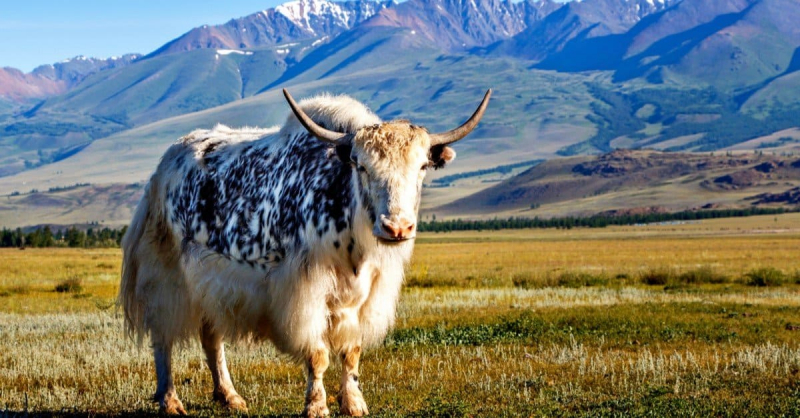
SakSa/Shutterstock.com 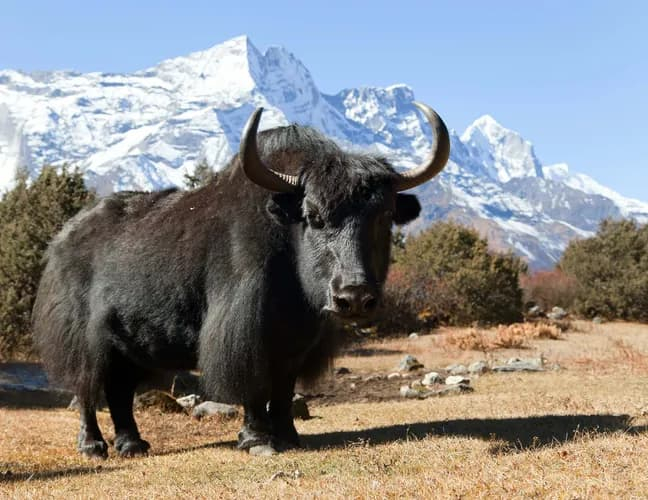
Páginas de Delphi -
Tibetan Gazelles are native to the Tibetan plateau, and are widespread throughout the region, inhabiting terrain between 3,000 and 5,750 m (9,840 and 18,860 ft) in elevation. It is almost restricted to the Chinese provinces of Gansu, Xinjiang, Tibet, Qinghai, and Sichuan, with tiny populations in the Ladakh and Sikkim regions of India. These animals also have unique air sacs in their large nostrils that enable them to inhale more oxygen. These animals can run for more than 60 miles at speeds of up to 43 miles per hour.
The majority of the goa's body is a grayish brown color, with the summer coat being considerably greyer in color than the winter coat. In the middle of its heart-shaped white rump patches is a short tail with a black tip. Its fur is noticeably thicker in the winter and lacks an undercoat, comprising primarily of long guard hairs. It looks to have exceptional hearing and sight, as well as excellent hearing. Its long, slender legs are better for running, which is necessary to avoid predators.
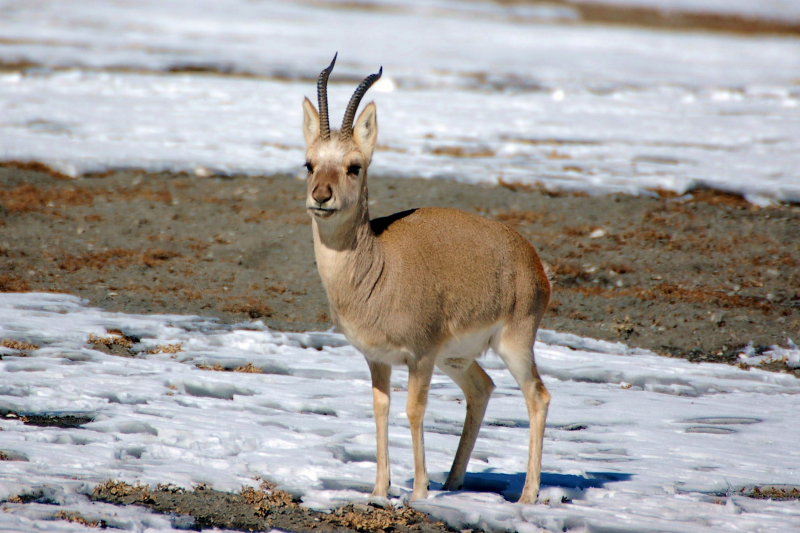
Pinterest 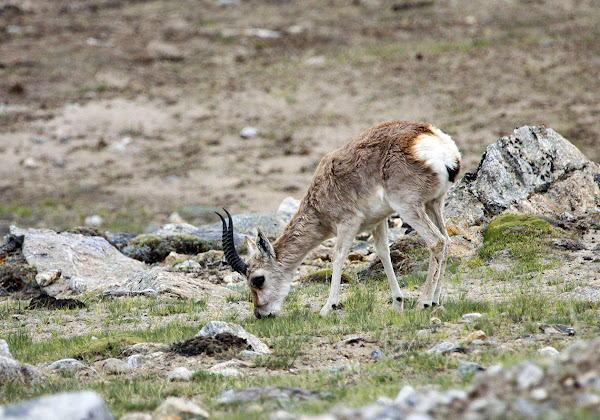
Project Noah -
The Chiru is a medium-sized bovid that originated on the plateau of northern Tibet. The majority of the population resides close to the Chinese border, but some also dwell in Bhutan and India. There are less than 150,000 mature individuals left in the wild, but it is now believed that the population is growing. Due to extensive illicit poaching, they have become endangered in the 1980s and 1990s.
The Chiru lives between elevations of 3,250 and 5,500 m (10,660 and 18,040 feet) in open alpine and cold steppe habitats. They favor broad, level areas with little vegetation. A special adaptation of the species to its high-altitude habitat is the retention of the fetal version of hemoglobin even in adult animals, which provides higher oxygen affinity. The Tibetan antelope is the only species of mammal where this adaptation has been documented.
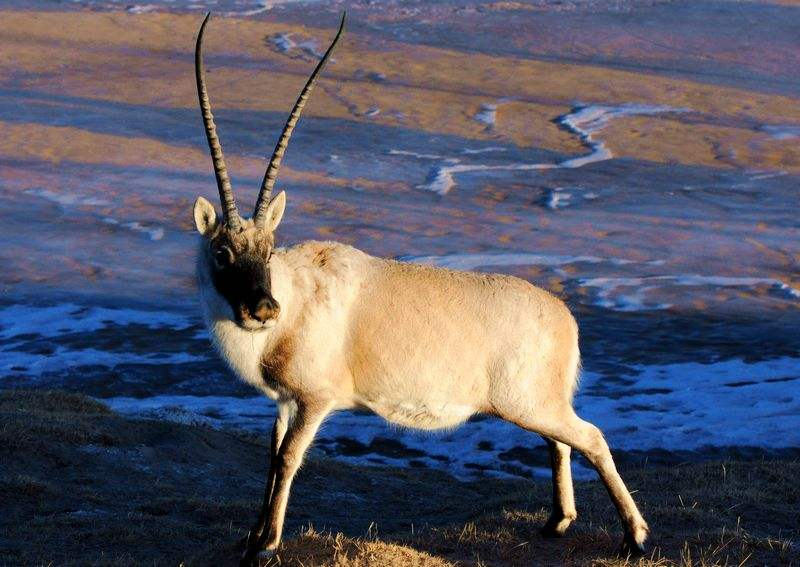
Extravagant Yak 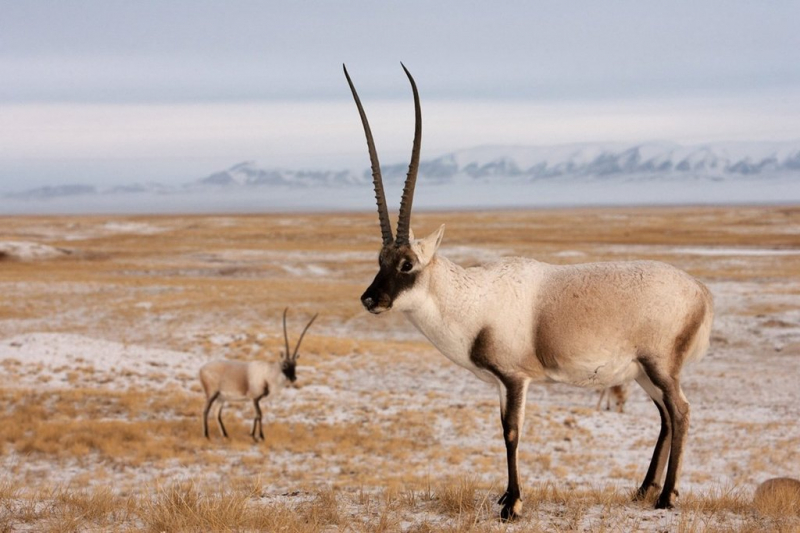
Tibetpedia -
The Kiang (Equus kiang) is the largest of the Asinus subgenus. Kiangs live between an elevation of 2,700 and 5,300 meters (8,900 and 17,400 feet) in alpine meadows and steppe regions. They favor areas that are largely composed of grasses, sedges, and other low-lying vegetation, as well as wide valleys, low hills, and generally flat plateaus. In addition to providing them with sufficient fodder lacking in central Asia's more dry regions, this open landscape may also make it simpler for them to spot and escape from predators.
Their only real predator other than humans is the Himalayan wolf. Kiangs defend themselves by forming a circle, and with heads down, kick out violently. Wolves typically attack lone animals that have separated from the pack as a result. Kiangs occasionally form big herds that may contain several hundred animals. These herds, however, are merely transient assemblages made up either entirely of young males or of mares and their calves.
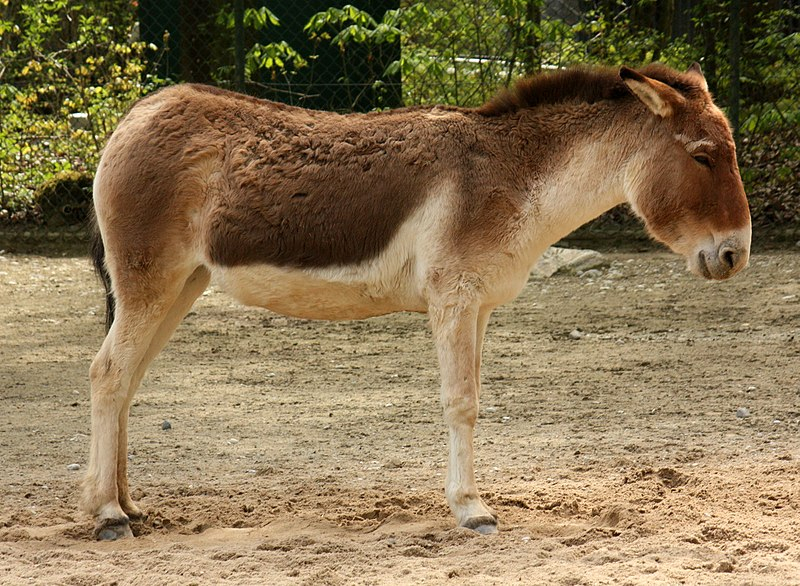
Wikipedia 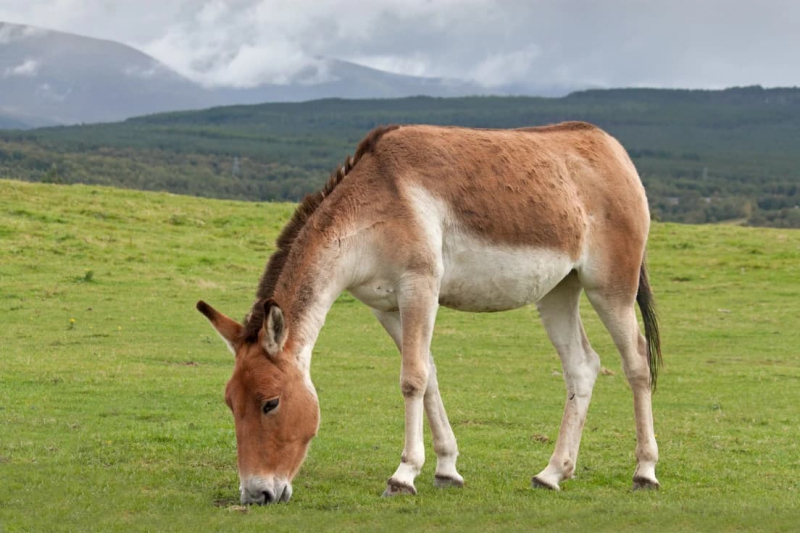
RoundGlass Sustain -
The Himalayan Marmot (Marmota himalayana) is a marmot species that inhabits alpine grasslands throughout the Himalayas and on the Tibetan Plateau. The dense woolly fur of the Himalayan marmot is rufous grey on the back and rufous yellowish on the ears, belly, and limbs. Its tail end and bridge are both dark brown. Being around the size of a large housecat, it is one of the biggest marmots in the entire globe. The average body weight is 4 to 9.2 kg, with the spring following hibernation being the heaviest and the autumn preceding it the lightest.
The Himalayan marmot can be found in northeastern Pakistan, northern India, Nepal, Bhutan, and China at elevations of 3,000 to 5,500 m (9,800-18,000 ft) in the Himalayas and Tibetan Plateau. It has been reported in the Chinese regions of Xinjiang, Qinghai, Gansu, Xizang, western Sichuan, and Yunnan. Its range overlaps with that of the long-tailed marmot (M. Caudata) in the west, although there is no evidence that the two can hybridize. The Himalayan marmot lives in short grass steppes or alpine habitats, typically above the tree line but below the permanent snow limit.
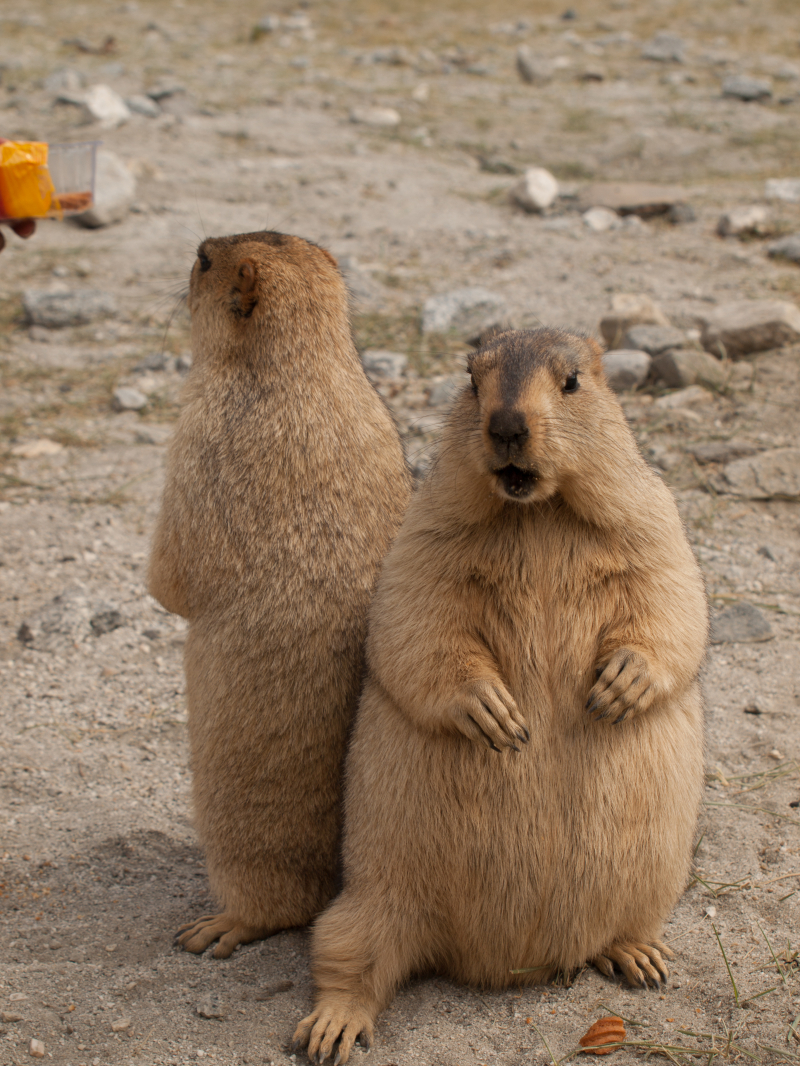
Wikipedia 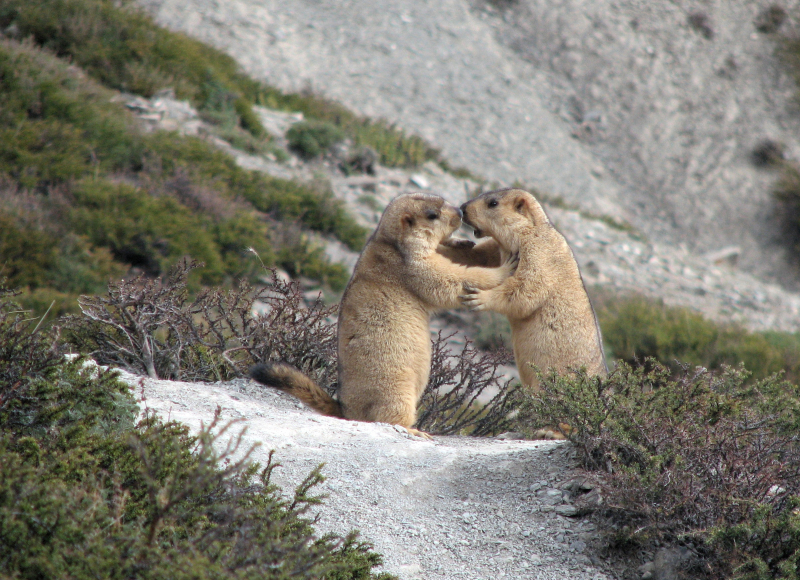
Wikipedia -
The Tibetan Sand Fox or Tibetan Fox is a species of true fox endemic to the high Tibetan Plateau, Ladakh plateau, Nepal, China, Sikkim, and Bhutan, up to elevations of about 5,300 m (17,400 ft). The Tibetan fox is a tiny, compact animal with a silky, dense coat, an obscenely small head, and a bushy tail. Its cheeks, flanks, upper legs, and rumps are grey, while its muzzle, crown, neck, back, and lower legs are tan to rufous in color. Its tail tips are white. The insides and undersides of the short ears are white, while the backs of the ears range from tan to greyish tan.
Plateau pikas are the Tibetan fox's main prey, followed by rodents, marmots, woolly hares, and lizards. Additionally, it scavenges livestock, musk deer, blue sheep, and Tibetan antelope carcasses. Due to the nocturnal habits of their primary food, pikas, Tibetan foxes hunt primarily alone during the day. During pika hunts, Tibetan foxes may develop commensal relationships with brown bears. The foxes seize the pikas as they flee from the bears after they had dug them out.
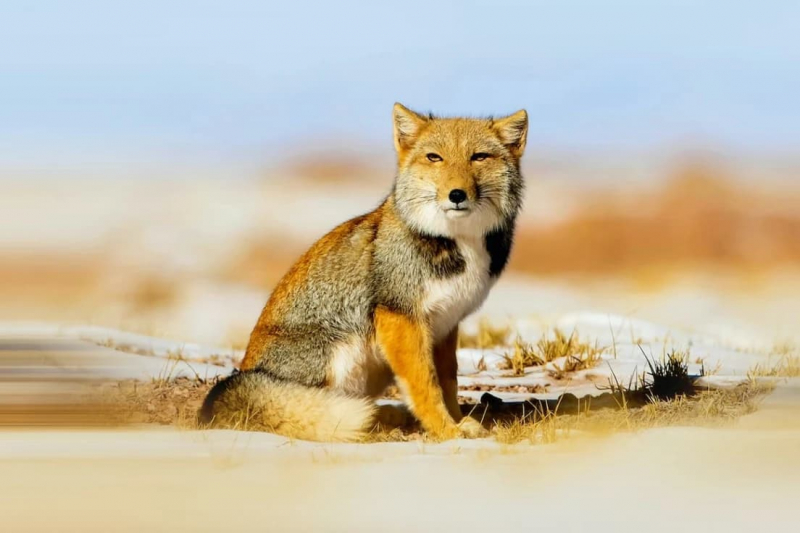
Pinterest 
The moment: Tibetan fox versus marmot (China Dialogue) -
The Bearded Vulture, also known as the lammergeier and ossifrage, is a very large bird of prey and the only member of the genus Gypaetus. The bearded vulture does not have a bald head like the majority of vultures do. Even though this species has a strong and muscular neck, its head is rather modest. Its shape is typically elongated and slender, yet occasionally the hunchback of these birds makes it appear larger. The feet are huge and powerful, and the motion on the ground is waddling. The adult is primarily white, rusty, and dark gray in hue. Grey-blue to grey-black can be seen above. The black band across the eyes and the lores and bristles under the chin constitute the black beard that gives the species its English name contrast with the creamy-colored forehead.
This species is almost entirely associated with mountains and monadnocks with plentiful cliffs, crags, precipices, canyons, and gorges. They occasionally inhabit woods but are frequently found close to alpine pastures and meadows, montane grassland and heath, steep-sided, rocky wadis, high steppe, and other similar habitats. It typically inhabits areas near or above the tree line, which can be found at elevations of up to 2,000 meters (6,600 feet) in Europe, 4,500 meters (14,800 feet) in Africa, and 5,000 meters (16,000 feet) in central Asia. If cliffs are available, they have been observed to breed below 1,000 meters (3,300 feet) in southern Armenia.
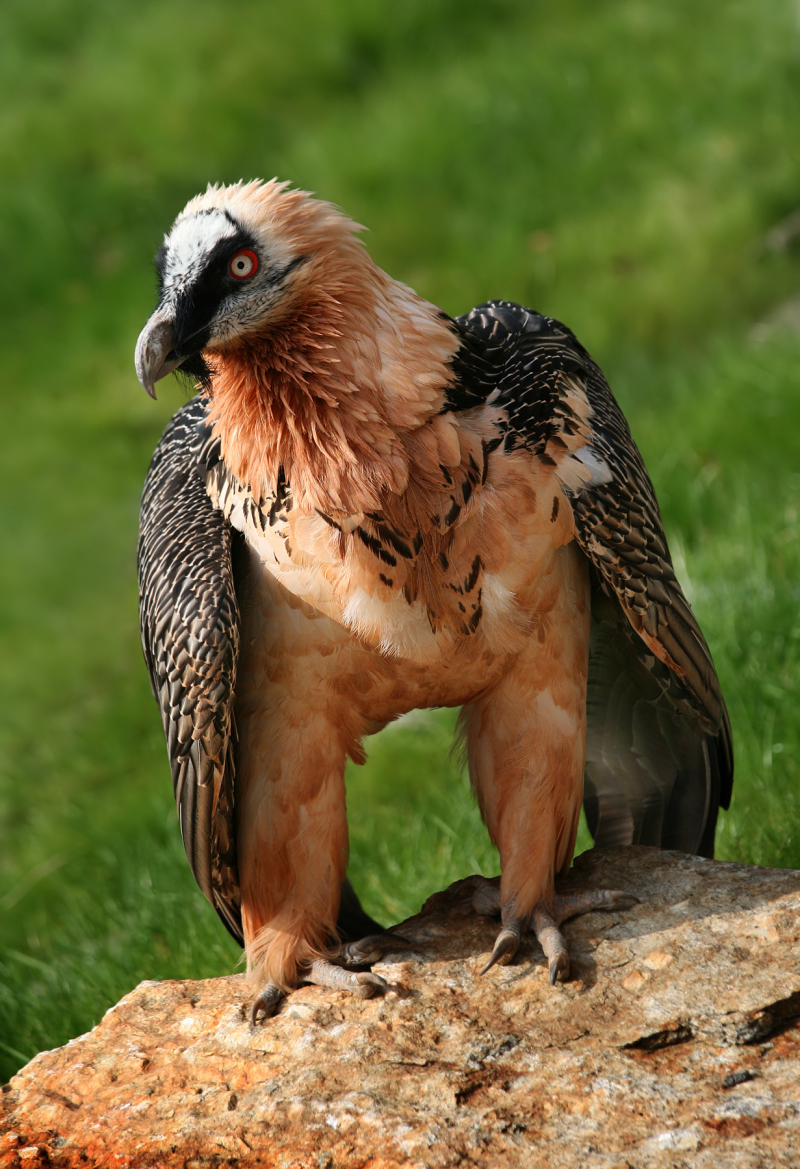
Wikipedia 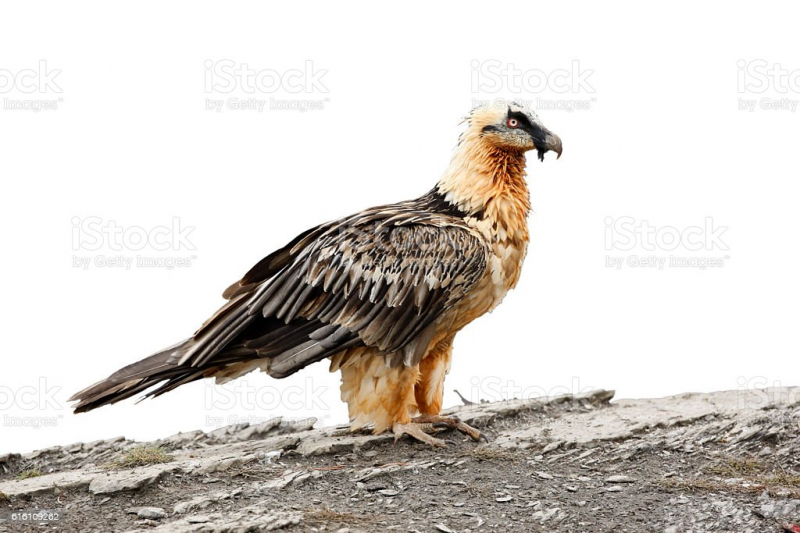
iStock -
The Himalayan Tahr is a large even-toed ungulate native to the Himalayas in southern Tibet, northern India, western Bhutan, and Nepal. It is listed as Near Threatened on the IUCN Red List, as the population is declining due to hunting and habitat loss. The Himalayan tahr lives at elevations up to 16.400 feet above sea level. The thick, two-part coat of this animal lengthens during the winter. It is more insulating in cold weather thanks to its additional length and thick undercoat.
The Himalayan tahr's distinctively shaped hooves are one of the tahr's amazing adaptations for moving across rough alpine terrain. The hooves have a strong outer core to protect them and a softer inner core to enable them to move more easily across rough terrain. They can easily travel around, therefore they find higher ground to find food throughout the day. They often rear up on their back legs and use their front legs like arms to reach vegetation that other animals, like mountain goats, cannot get. Once evening arrives, they move to lower elevations, where it is usually warmer.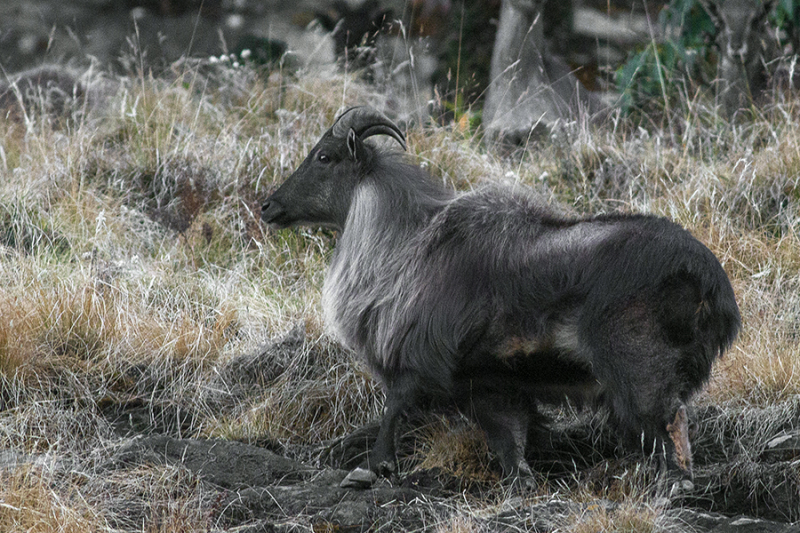
Wikipedia 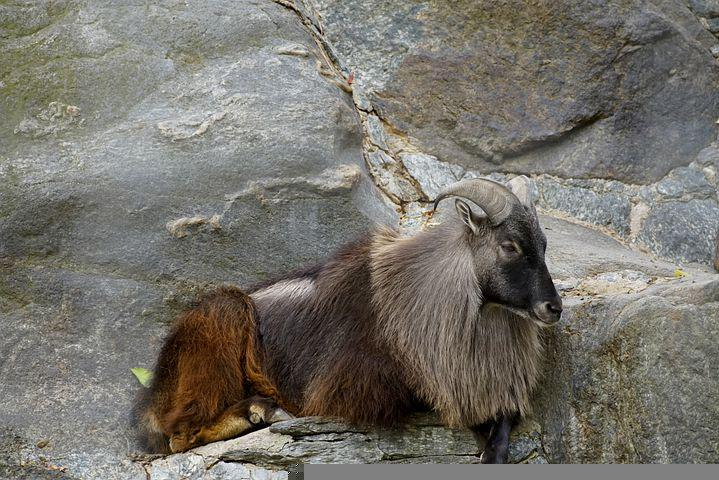
Pixabay -
The Brown Bear is a large bear species found across Eurasia and North America. They live in many locations around the world up to 16,400 feet above sea level. Brown bears can dig up food even when it is covered in snow and ice because they have long, blunt claws. Being able to break numerous creatures' necks with a single spat, brown bears are at the top of the food chain. Their substantial layer of fat keeps them warm. They frequently detect food from up to a mile away thanks to their keen sense of smell. Last but not least, because brown bears will consume nearly anything, including plants and animals, food is easy to come by.
Among contemporary bears, the brown bear has the widest range in size. The size of the majority of recognized subtypes varies greatly, depending on the population they come from and their normal size. The weight of individual bears varies seasonally as well; they weigh the least in the spring due to insufficient foraging during hibernation and the most in the late fall following a time of hyperphagia to gain extra weight in preparation for hibernation.
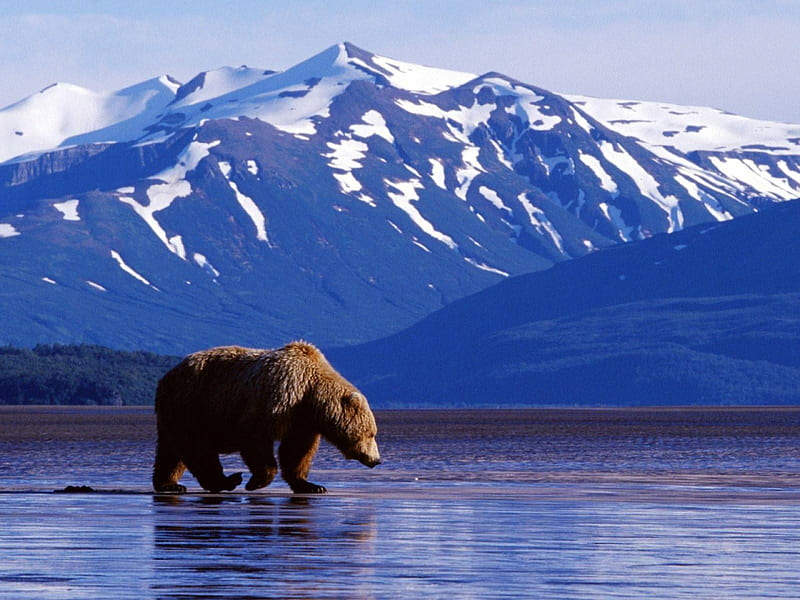
Peakpx 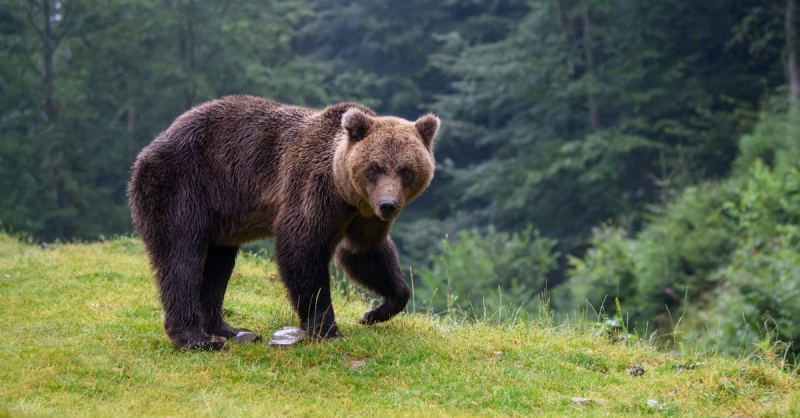
Wild Hunting in Romania












